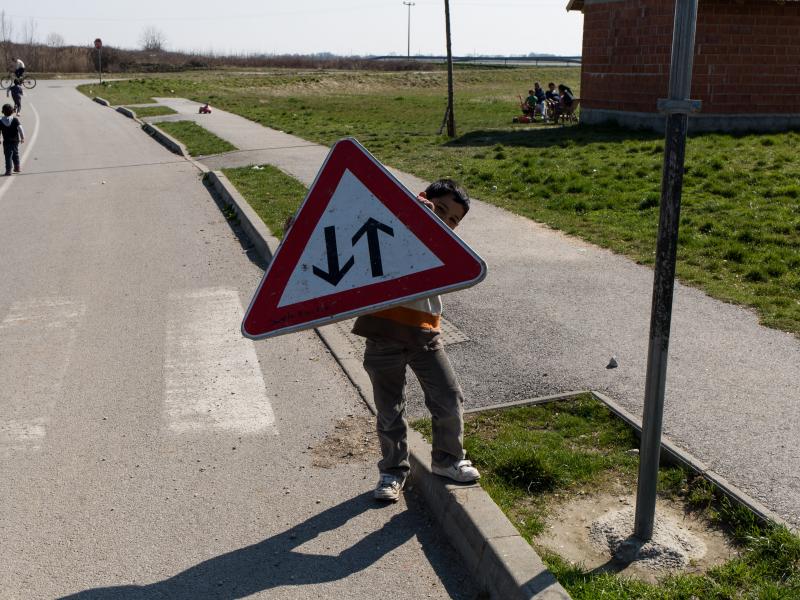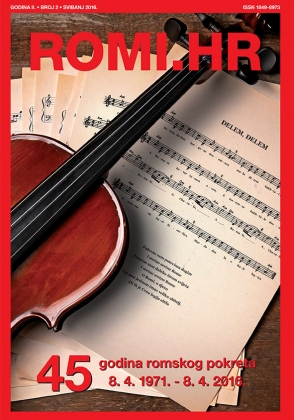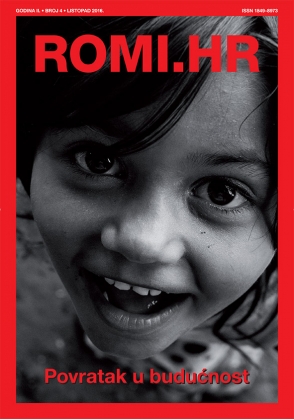Focus ROMI.HR
/1971 is considered a pivotal year for the Roma political movement, as it was the first time in which Roma from many different countries gathered and discussed constitutive elements of their identity. However, the legacy of the First World Roma Congress can only be understood fully by looking at the main challenges and key features of the political history of Roma people.
Roma people are estimated to be one of the biggest minority groups in the world, a status that has been characterizing them for centuries now. In Europe, for example, there are around 10-12 million Roma, half of whom are EU citizens as citizens of an EU member state. In recent decades, increasing attention has been paid to Roma people’s condition and to a higher degree of protection in terms of Human and Minority Rights. This trend follows a more general increase in focus on minority protection that has been a consistent feature of international and, most significantly, European political approach from the 1990s onwards. However, the implementation of higher standards of protection was not, at least at first, designed keeping in mind Roma people, who had been suffering different levels of discrimination or marginalization throughout almost their entire history.
The reasons why Roma people were kept at the margins of many political decisions are various and they often derive from broader historical, geographical and political contexts that pushed authorities and international actors to build their political agendas on the principle of urgency and priority. This explains, for example, why the call for action in terms of minority protection was only made (and received) in the 1990s: even though minority groups were already vastly present on the European continent, the rapid collapse of the Soviet Union and the satellite states linked to it first, and of Yugoslavia then, transformed a latent phenomenon in a pressing issue that needed to be tackled in a quick and structured manner. After the Second World War, that was a massive call to action for Europe, because many suddenly understood how common actually is to be a member of a minority, and how quickly a minority group can become a political target simply because of its identity. Therefore, international organizations such as the Council of Europe (CoE), the European Union (EU) and the Organization for Security and Cooperation in Europe (OSCE) started producing documents and regulations aimed at enforcing protection of vulnerable groups, while also establishing monitoring mechanisms entitled to regularly check the implementation of said regulations.
Of all three organizations, the CoE definitely was the most active one, as it produced a wide series of international legal acts to ensure higher levels of protection to minorities, including Roma. However, since there were no specific mechanisms to check these documents’ implementation by States, the CoE’s efforts remained partially vain. Yet, the question of minority protection was so poignant that, when the talks about European Union enlargement towards Eastern Europe and Western Balkan countries began, the European Council (the meeting that reunites all the Heads of States and/or Governments of EU Member States) decided to include minority protection among the 1993 Copenhagen Criteria, still used to this day to evaluate whether a country is ready for membership or not.
However, it would be unfair and too simplistic to try to understand the status of the Roma minority in Europe just by looking at the acts of international organizations. Indeed, this group presents some peculiarities that distinguish it from all other minorities, making it an unicum in the field of Minority Rights and protection. Thus, to better understand Roma position, it is necessary to dive deeper into their past and political history, and to put them in comparison with most common features that pertain to almost all other minority groups in Europe.
First of all, it is crucial to check how minorities are defined in legal terms: to do so, Article 27 of the International Covenant on Civil and Political Rights (ICCPR) and the General Comment No. 23 on said article are of great help. According to these legal bases, minorities are composed of people “who belong to a group who share in common a culture, a religion and/or a language” which are different from the ones shared by the majority of the population residing in a given State. Although this definition may seem quite straightforward and easy to apply, it indirectly refers to the much more complex concept of national (or ethnic) identity. In social and legal sciences, identity is a very nuanced term that encompasses all the traits and attributes or expected behaviors that are common to all people pertaining to a specific social category. In the context of minority rights, these elements include religion, culture, ethnicity, language, etc.
When trying to apply this reasoning to Roma people, however, things get more complex. Indeed, the word ‘Roma’ has been introduced as a more positive and less biased umbrella term that includes a variety of groups (Roma, Sinti, Bayash, Ashkali, Manush, Jenische, Kaldaresh, Kalé…) which share some common elements, but that do not constitute an homogenous community. For example, many Roma no longer speak Romani language, but rather use the language of the country in which they reside, or a combination of Romani and local languages. Moreover, the Romani language itself includes a wide range of different dialects and variants that hardly fit under the same linguistic label. Additionally, not all these communities recognize themselves as Roma, despite sharing some common, unifying cultural and ethnic elements.
This process of building Roma identity is made even more challenging by the lack of kinship to a specific State. Indeed, minorities are usually groups of people residing in a country but who can refer to their own kin-State, which will also be active in promoting and ensuring their protection. For example, there are Croatian national minorities in many European countries, and the Republic of Croatia is in charge of guaranteeing that their rights are protected abroad. However, given that there is no “Roma country”, there is no kin-State Roma can relate to, and no State that is actually interested in protecting them as its own citizens.
All the elements that have been put in order until now are fundamental to understand the importance of the Romani political movement, of its origins and its achievements, especially on the occasion of the anniversary of the First World Roma Congress, which was held in London, in April 1971. The prodromic events that led to the Congress are multiple and all important to grasp the dynamics at the basis of identity-building processes.
Some primordial attempts at organizing themselves politically can be found already at the beginning of the XX century, when Roma people from different European countries started advocating for equality (such as Roma in Bulgaria, in 1906) and for the protection of their arts and culture (as in Russia and Czechoslovakia). Between the late 1910s and the late 1920s, Bulgaria also experienced the formation of “the first overly political Romani NGOs” (Nirenberg, 2005), while at the same time similar organizations started appearing in the United States as well. However, the brutalities of the Second World War put all these political efforts in the shadows: many Roma communities were politically disrupted by the Porrajmos, the genocide of Roma people, and any political spark was dramatically cut off. Additionally, in the aftermath of the war, the biggest Roma minority communities - located in South-East Europe - often ended up living under authoritarian regimes in which minority protection and political representation of minorities was not a crucial element, thus leaving any possible hope for a new generation of Roma activists aside. It must also be noted that Roma in Western Europe were also at the margins of politics, notwithstanding the fact that they were not subject to non-democratic rule. Yet, the poor attention from governments in recognizing their status as a minority group and, in some cases, even in acknowledging their existence, together with a not very rich tradition of political activism, prevented these Roma communities from cooperating to get some international representation.
It was only in the 1960s that some Roma activists began to raise the point of identity, with the scope of finding some unifying elements that could constitute a common ground for joint action. To begin with, activists started emphasizing that Roma people are actually a nation, although a non-territorial one, due to the abovementioned absence of kin State. However, all these groups share a common history and are deeply interconnected through culture and common experiences that can be founding elements for being a nation. Secondly, they started fiercely claiming to be a full-fledged minority group in Europe, and tried to build some fruitful collaboration with other national minorities, especially in Central and Eastern Europe in which these groups were (and still are) quite numerous. Their efforts still had to account for all the differences between Roma groups that have been introduced in the first part of this article, which were not helpful in achieving unity, because it was fairly common for Roma activists to have even opposite views on how they should frame themselves facing both governments and other minorities (Vermeersch, 2006).
Despite all these challenges, some international Roma activism slowly started to appear: for instance, brothers Oskar and Vinzenz Rose founded the Association of German Sinti in West Germany, in 1952. Similarly, Ionel Rotaru, a Romani activist from Moldova who had moved to France, founded the International Association of Gitanos in 1959. In the same years, analogous activities took place in the United Kingdom, where the Gypsy Council was founded in 1966, and in the territories of Former Yugoslavia. Precisely Yugoslavia was one of the main actor in this process due to geopolitical and strategic reasons: indeed, the leadership of this country decided to step back from the Cold War division that transformed the United States of America and the Soviet Union into two competing superpowers, founding instead the Non-Aligned Movement (NAM). This move proved to be crucial: Yugoslavia, along with India and Egypt, was one of the initiators of the NAM, thus building strong and fruitful ties with India, which is considered to be the country from which Roma started migrating many centuries ago.
All these national-based activities were the fertile land for a more structured international Roma movement to be built and formalized: everything was then formalized at the First World Roma Congress (London, April 1971), in which Roma delegates from fourteen different countries met to discuss how to achieve equality, social recognition, and to fight together for a positive future for Roma (Council of Europe).
During the Congress, Roma delegates addressed all the basic questions about their identity: from picking a national anthem (Dzelem Dzelem, composed to traditional Roma melody) to adopting a unifying flag and discussing about such a diversified culture and language, that was definitely the moment in which irreversible and core decisions were made to pave the way for the nascent international Roma community. Above all, that was the first meeting for Roma people who had never met each other before, and who were coming from so many parts of the world that, at that time, were also separated by the Cold War dynamics. This meeting was therefore something more than just an ‘organizational’ conference: it was the occasion for Roma people to actually get to know each other, and to understand how powerful unity and cooperation can be to achieve common goals notwithstanding specific differences.
In conclusion, looking at Roma people's historical and political journey towards recognition and rights within Europe is highly inspirational and reflects all the issues they had to face to achieve international protection as a minority group. Celebrating the impressive achievements of the Roma community at the 1971 Congress in London, on the day in which main decisions were taken by Roma for Roma, is a great moment to reflect on all the improvements that had been made in the last 54 years, but also to spot all the areas in which some more additional steps can be made to fight anti-gypsyism and to achieve a more equal and tolerant society in Europe.
 Back to Focus
Back to Focus













